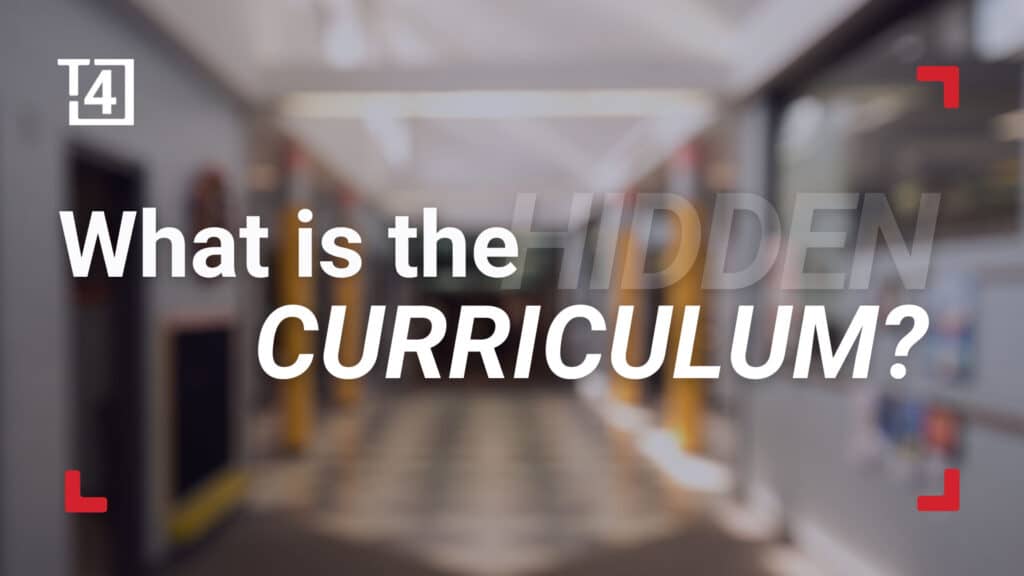When we think about education, our minds often drift to textbooks, exams, and classroom lessons. However, there’s a deeper layer of learning happening that is rarely discussed but significantly impacts student success—the hidden curriculum.
Schools that truly aspire to transform education can’t just focus on changing their curriculum, they have to look deeper into what’s known as the hidden curriculum, the key to fostering an environment where students thrive.
But what is the hidden curriculum?

The concept originated with Philip Jackson in 1968 when he wrote about it in his book Life in Classrooms. It refers to the conscious and unconscious norms, values, and behaviours of the learning process, including unplanned and unintended learning outcomes. Learning these unwritten rules will help students succeed in the school environment.
School is not only about teaching what the curriculum covers; there are many things that kids learn that are unspoken. School is not just about passing on information – the official curriculum – which is obviously important, but it also teaches through what is taught and what isn’t. Every school has its own hidden curriculum due to the different routines, regulations, and rules they have to follow.
And the hidden curriculum also extends to the culture educators find themselves teaching in, which is every bit as important to ensuring academic success.
Elements of the hidden curriculum
The hidden curriculum involves learning, such as, how to satisfy teachers, how to get along with peers, knowing how and when to simulate certain behaviours, and so on. There are also simpler norms that are part of the hidden curriculum, such as raising your hand to speak, not talking during class, or turning in assignments on time. Overall, it encompasses the unsaid, unspoken, and unwritten norms and values, which are as important and integral to the learning process as any formal content. Learning these norms and behaviours is a must for school survival.
Everything that happens at school leaves an impression on students’ lives. The hidden curriculum is as important as the official curriculum because kids need to learn to navigate the school environment. It not only benefits students but also has a strong influence on teachers. For teachers, the hidden curriculum involves knowing how much time students need to complete a task, how to manage their classroom, and the school culture, among other things.
Navigating the hidden curriculum
Sometimes, the hidden curriculum reinforces the school’s vision and mission, while other times it can contradict them. For instance, if a school claims to believe in gender equality but its courses or programmes are biassed, it can mislead the students. Just like in life, schools should align their belief systems with their actions.
Some ways to start unlocking the hidden curriculum are:
- Talk to students about the expectations the school has.
- Tell them the norms and behaviours they should follow.
- Take a moment to explain to them the way they should behave at important school festivities.
- Talk about ways they can learn to study, and share strategies for them to succeed in your classroom and school too.
- Tell them what the proper way is to talk to teachers, school principals, and all school staff.
Encouraging a positive school culture
To foster a more positive school experience and culture, schools can start by transforming how they treat students and staff, and by being mindful of the messages they convey.
Even outside the classroom, students are constantly learning from the actions and behaviours of educators. As educators, we must recognise that our actions, words, and even silences serve as powerful lessons for our students. This ongoing influence presents an opportunity to lead by example and promote positive values. The first step in leveraging this influence for change is raising awareness of the hidden curriculum – the implicit lessons students learn from the school environment and culture.
For schools aiming to evaluate the effectiveness of their current initiatives or seeking guidance on cultivating a positive school culture, the Best School to Work programme offers a comprehensive solution. This programme is specifically designed to enhance teacher wellbeing and establish a healthy school culture.
By participating in Best School to Work, schools can:
- Recognise the Hidden Curriculum: Identify the implicit lessons conveyed through the school environment and culture.
- Align with Values and Goals: Ensure that these implicit lessons align with the school’s core values and educational objectives.
- Foster Supportive Environments: Create a nurturing atmosphere where students and staff feel valued and supported.
- Enhance Teacher Wellbeing: Implement strategies that prioritise the mental and emotional health of educators.
- Promote a Thriving Educational Environment: Develop a school culture that encourages growth, positivity, and academic excellence for all.



